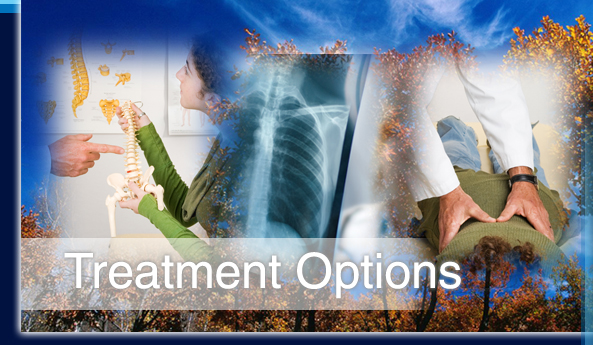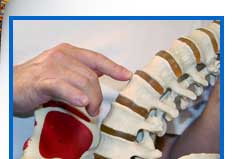 |
 | Bed Rest | | | However sensible getting off your back may seem, studies show that bed rest is NOT superior to remaining (conservatively) active to treat a low back injury. In fact, prolonged bed rest can actually lead to increased stiffness and pain and a reduced ability to function. Periodic short rests can be helpful and your healthcare provider may advise a reduction of normal activity. | | | |  | Heat and Ice | | | Immediately after an injury, ice your back for about 15 minutes at least 3 to 4 times a day to reduce or prevent inflammation and swelling. After 2 to 3 days, if symptoms persist, use a heating pad for 15 to 20 minutes every 2 or 3 hours. Then, if pain continues, see a healthcare professional. | | | |  | Drugs | | | Non-prescription pain relievers such as acetaminophen (i.e. Tylenol) or other non-steroidal anti-inflammatory drugs or NSAIDS (i.e. ibuprofen) may be helpful for temporary relief, but are NOT advisable for chronic pain or long term use. Tylenol has recently been linked to liver disease and ibuprofen to bleeding ulcers. Doctors often prescribe stronger drugs for pain, but of course, these have other risky side effects including mental or physical impairment, behavioral effects, and addiction. Extreme caution should be used when undergoing any chemical therapy for pain. | | | |  | Surgery | | | Most back pain problems can be treated effectively without costly and risky surgeries. In fact, one recent study shows that up to 40% of back surgery patients report a DIS-satisfactory result within 4 years of treatment. For this reason, other more natural, less invasive treatments should be explored or exhausted before choosing surgical intervention. | | | |  | Chiropractic | | | Chiropractic is a natural form of treatment that operates on the premise that the body is designed to heal itself. Chiropractors actually have more training than a traditional general or family care physician. Chiropractors use gentle spinal adjustments to correct spinal misalignment and relieve pressure on sensitive nerves. They often combine this form of treatment with other non-invasive modalities such as muscle stimulation, ultrasound, massage, and physical therapy to relieve symptoms and rebuild core strength and maintain permanent correction. The chiropractor's goal is always to correct the problem, not simply hide the symptoms. |
|  | |
HUDSON Chiropractor, HUDSON Chiropractic, HUDSON back pain, HUDSON back injury, HUDSON upper back pain, HUDSON mid back pain, HUDSON chronic back pain, HUDSON low back pain, HUDSON sciatica, HUDSON pinched nerve, HUDSON hip pain, HUDSON back strain, HUDSON pulled muscle, HUDSON slipped disc | I was lucky to get a tip about Dr. B from my brother. I had previously seen two other chiropractors and never saw any improvements…just the same pain. Dr. B has helped me with the adjustments, stretches and with the purchase of an inversion table. I had trouble with my lower back prior to seeing Dr. B but now no more problems! I am more active than ever before; always at the gym or out cycling and I also work very hard physically at my job. I can’t forget to mention that Dr. B’s staff is the best. They are always happy and pleasant to be around.
Donald C.
|
|  |




